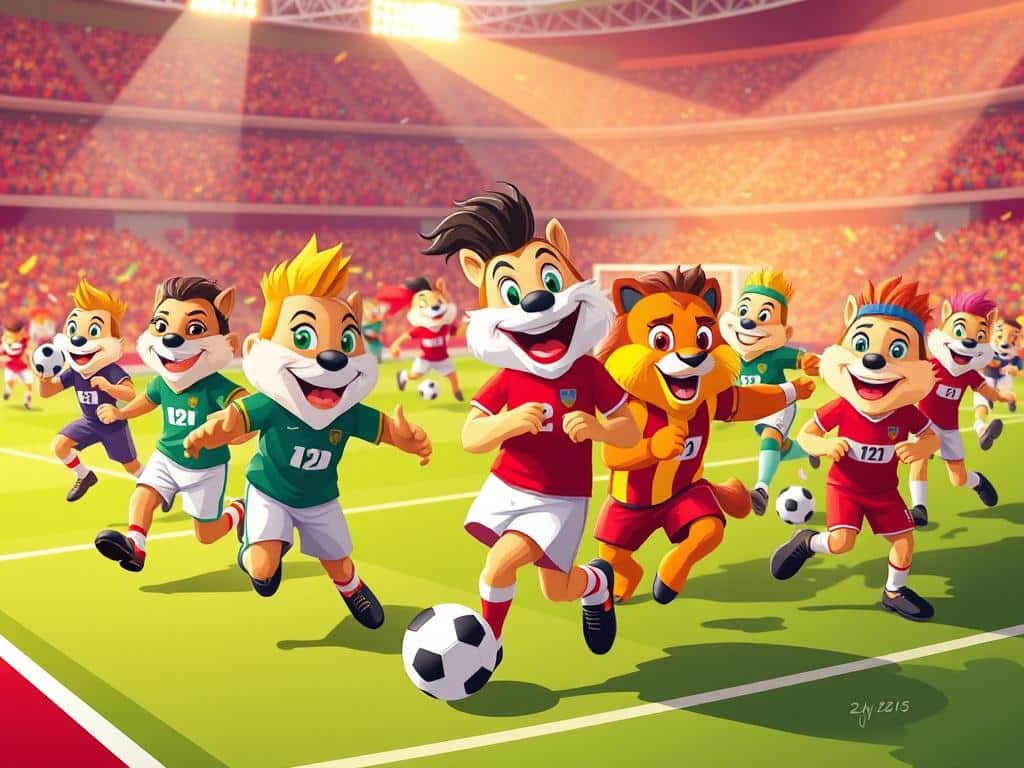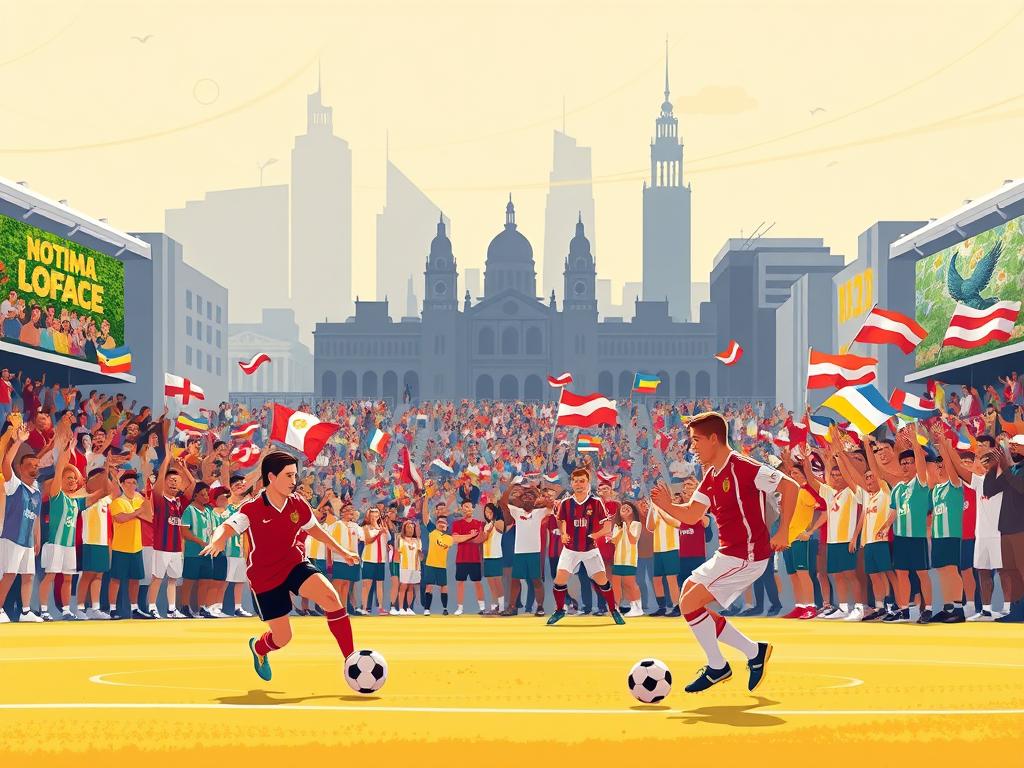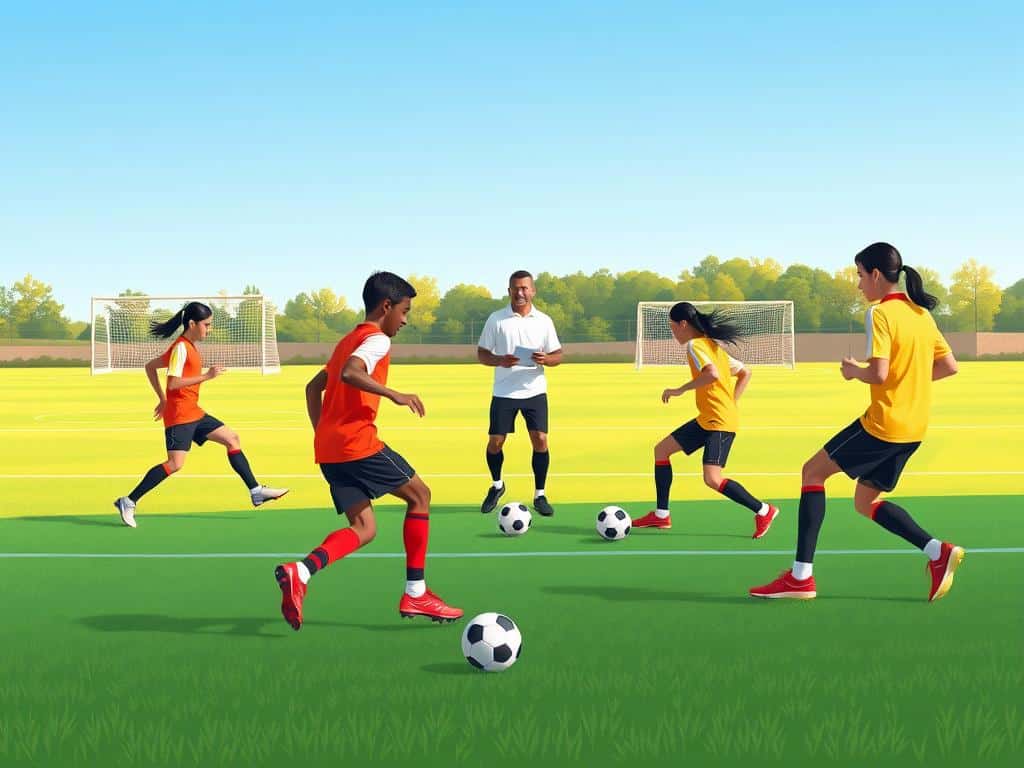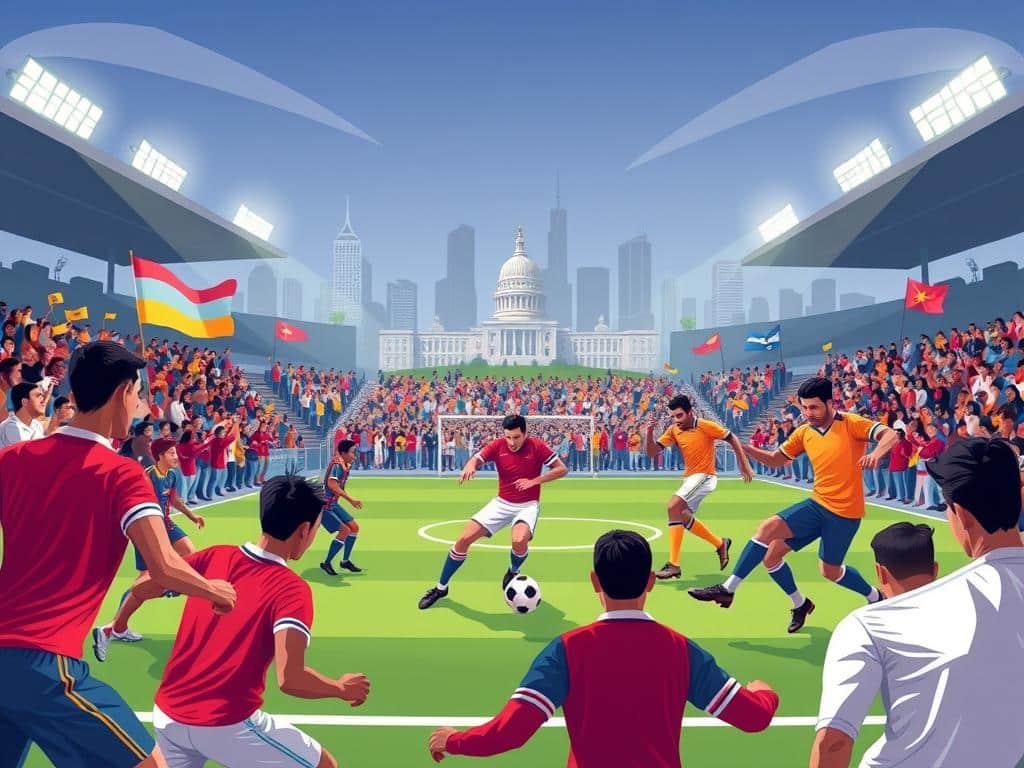I love how famous soccer mascots turn a routine match into a memory you can’t shake—the Gunnersaurus roaring across Arsenal’s pitch, or Hennes the billy goat leading FC Köln traditions since 1950.
These characters do more than pose for selfies. They tie a club to its fans with jokes, stunts, and surprising deals—think Filbert Fox landing a Puma shoe contract or Boiler Man emerging from a sponsor stunt in 2018.
I’ll show quick, vivid moments that matter: Harry the Hornet’s cheeky protest at a diving incident, Cozmo’s LA Galaxy debut in 2003 and the seasons that followed, and the simple designs that last over time.
Read on to see how a strong mascot identity becomes an essential part of talking football—and why fans keep returning to these playful symbols long after a game ends.
Key Takeaways
- Mascots link clubs to fans through personality and tradition.
- Real moments—shoe deals and sponsor stunts—boost visibility.
- Longevity, like Hennes since 1950, builds deep club roots.
- Viral antics and friendly jabs amplify matchday theater.
- Good design and story make a mascot part of club folklore.
Why mascots matter on matchday and beyond
Matchday energy often starts long before kickoff, and a well-crafted mascot can spark the whole stadium. I’ve seen a single entrance calm jittery fans or flip a quiet crowd into a chorus of chants.
From hype builders to cultural symbols
A great mascot energizes fans before the whistle, entertains at halftime, and keeps the club visible long after full time. Concrete examples matter: Hennes’ goat lineage ties FC Köln to decades of ritual, while Filbert Fox parlayed a 2016 Puma deal into broader recognition.
When a character hits the right tone—fun, welcoming, a little mischievous—it serves at youth clinics, charity events, and community days. That same tone makes short social clips shareable across the globe.
What makes a mascot “famous” in world football
Fame in world football usually blends a sharp design, a memorable backstory, repeatable tradition, and a signature move fans expect. Harry the Hornet’s 2016 prank is a good example of a stunt that multiplied reach.
- Design + backstory = instant recognition.
- Tradition and repeat rituals build emotional value.
- Authentic sponsorships scale reach without losing grit.
| Role | Why it matters | Example |
|---|---|---|
| Pre-match hype | Primes fans, reduces tension | Timbre of chants, choreographed entrance |
| Tradition | Anchors club identity season after season | Goat lineage in Cologne |
| Marketing | Transforms local favorite into a brand asset | Puma deal for Filbert Fox |
| Social reach | Turns stadium moments into global things | Viral pranks and short clips |
Premier League icons that stole the show
Some Premier League club characters become instant icons by mixing stunt, story, and heart.
Gunnersaurus (Arsenal)
Gunnersaurus is Arsenal’s gentle dinosaur. Hugs, photos, and sideline bits make him a matchday staple and a club symbol kids adore.
Fred the Red (Manchester United)
Fred the Red leans into the Red Devil nickname with a cheeky grin and tiny shin guards. He’s built for family photos and Old Trafford routines.
Hammerhead (West Ham)
Hammerhead looks like a transformer-style hero. Big movements and crowd charisma push the claret-and-blue sections into louder chants.
Harry the Hornet (Watford)
Harry the Hornet is known for pranks. His 2016 mock dive at Wilfried Zaha went viral and gave Watford a mischievous highlight reel.
Boiler Man (West Brom)
Boiler Man began as a 2018 sponsor gag and became a cult favorite. He shows how a clever bit of marketing can spark real fan love.
Captain Blade (Sheffield United)
Captain Blade is a one-eyed pirate with oversized swords and clown shoes. His theatrics get kids mimicking scenes all through the game.
Crusty the Pie (Wigan Athletic)
Crusty the Pie came from a school contest. That community origin keeps him feeling local and beloved by loyal fans.
Filbert Fox (Leicester City)
Filbert Fox landed a 2016 Puma shoe deal. That move proved a mascot can carry marketing weight while staying charming.
- Why they matter: Each mascot builds ritual, entertainment, and club visibility.
- Fan impact: Costumes and stunts create shareable moments that extend a team’s reach.
| Character | Notable trait | Origin | Fan effect |
|---|---|---|---|
| Gunnersaurus | Gentle dinosaur | Longstanding Arsenal staple | Family photos, traditions |
| Fred the Red | Tiny shin guards | Man United emblem | Matchday smiles |
| Harry the Hornet | Prankster | Viral 2016 stunt | Online buzz |
| Boiler Man | Sponsor gag turned cult | 2018 boiler promo | Merch and memes |
MLS favorites with big personalities
MLS clubs often lean on bold characters to turn quiet kickoffs into instant rituals.
Cozmo — LA Galaxy
Cozmo arrived in 2003 as a galactic daredevil. His high-energy entrances and stunt skits matched LA Galaxy’s big-stage identity.
The timing mattered: the club had won one MLS Cup before Cozmo and four after. That helped link the mascot to a run of trophy-filled years.
RapidMan — Colorado Rapids
RapidMan returned in 2020 after a 13-year retirement. The comeback tapped real Colorado nostalgia and the Rocky Mountain swagger fans remembered.
Timber Joey — Portland Timbers
Portland’s tradition began in the 1970s with Timber Jim. Timber Joey carries it on, sawing a slab for each goal and handing a keepsake to the scorer.
Why it matters: these characters turn an ordinary season into must-capture moments. From pre-kickoff hype to post-win celebrations, they add local flavor and live theater to MLS competition.
- Cozmo: high-energy entrances that echo trophy years.
- RapidMan: revival that honors club history.
- Timber Joey: ritual keeps fans and families connected.
| Character | Debut / Return | Standout trait | Fan effect |
|---|---|---|---|
| Cozmo | 2003 | Daredevil entrances | Big-stage energy |
| RapidMan | Returned 2020 | Rocky Mountain nostalgia | Renewed fan buzz |
| Timber Joey | Tradition from 1970s | Chainsaw goal ritual | Tangible keepsakes |
European cult classics outside England
Across the continent, certain team figures earned cult followings by leaning into local stories and bold looks. I’ll run quick, focused snapshots so you can see what makes each character stick for fans and families.
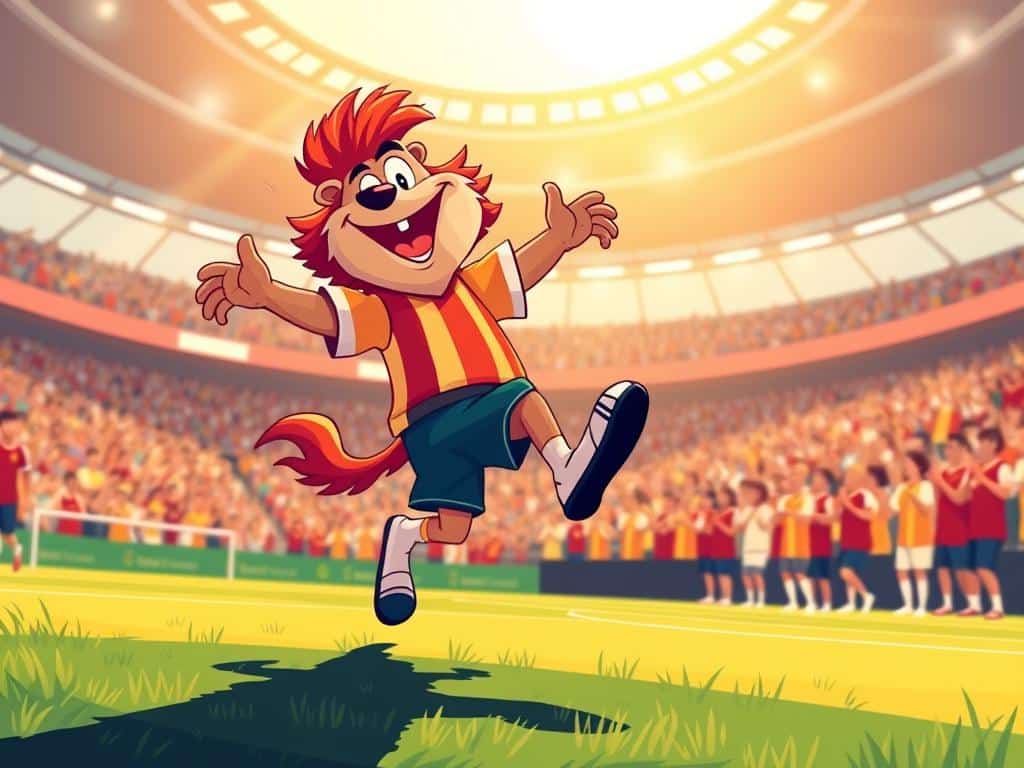
Kingsley (Partick Thistle)
Debuting in 2015, Kingsley’s jagged sunburst face shocked Scotland. It was so odd it became iconic—a visual risk that paid off.
Hennes (FC Köln)
Hennes is a living billy goat lineage dating to 1950. The goat anchors club rituals and gives fans a visible thread through the years.
Groguet (Villarreal)
Groguet is an anthropomorphic submarine in bright yellow. It shows a character needn’t be animal-shaped to fit a club’s song and story.
Jay (Juventus)
Jay’s gold boots and all-weather scarf deliver a crisp, repeatable image. Photos love that consistency on matchdays.
Fritzle (VfB Stuttgart)
Fritzle wears retro cartoon charm. He predates some pop-culture figures and feels intentionally timeless for kids.
Bulli, Erwin, Grayou, Palmerín
Bulli’s grin signals a new-era identity for Leipzig. Erwin once flashed a red card at a ref—comic, perfectly timed. Grayou retells dragon folklore across social feeds. Palmerín keeps things fresh with changing “hairstyles.”
- Takeaway: specific quirks—boots, folklore, bold shapes—make these club characters stick in fans’ memories more than many player cameos.
Latin American legends and local heroes
From Salvador to Tijuana, mascots in Latin America carry community roots as clearly as they carry club colors.
Super-Homem Tricolor (Bahia)
Super-Homem Tricolor riffs on comic-book heroes for brazilian club bahia. The bold cape and bright crest make the name easy for kids to spot.
He often appears with Lindona da Bahia, a Wonder Woman–inspired partner. That duo widens appeal and shows how club bahia puts family front and center.
Xolo Mayor (Club Tijuana)
Xolo Mayor salutes the Xoloitzcuintle, a native dog breed. The muscular design gives Club Tijuana a local emblem that feels rooted, not random.
Blu (Cruz Azul)
Blu channels the club’s rabbit nickname. As the official mascot, Blu helps new supporters link the name and team faster in the stands.
- Community reach: These characters do school visits, parades, and festivals.
- Why it works: When look and local story match, fans make emotional bonds fast.
| Character | Club | Standout trait |
|---|---|---|
| Super-Homem Tricolor | brazilian club bahia | Comic-book hero vibe; family duo |
| Xolo Mayor | Club Tijuana | Tribute to Xoloitzcuintle; muscular look |
| Blu | Cruz Azul | Hare identity; official mascot role |
World Cup spotlight: mascots on the biggest stage
On football’s largest stage, a mascot can become the image people carry long after the final whistle. The World Cup compresses emotion, color, and memory into simple symbols that travel with fans and players across years.
Fuleco (Brazil 2014): colorful armadillo that transcended the tournament
Fuleco captured Brazil 2014 with a bright armadillo design that carried the nation’s colors and a ball-like shell motif. That clear visual read well on TV and in stadium shots, which matters when millions watch.
Why it worked:
- The design was local but universal—an armadillo with Brazil’s palette that still felt friendly to international viewers.
- Simple shapes and bold lines made the character visible from the upper deck and legible on small screens.
- Merchandise, stickers, and selfies let fans take a piece of the tournament home, extending Fuleco’s life for years.
- One approachable face helped bridge language gaps among traveling supporters and host-city communities.
| Aspect | Detail | Impact |
|---|---|---|
| Design | Armadillo with ball-pattern shell and Brazil colors | Instant recognition on TV and social clips |
| Reach | Merchandise and media coverage | Longevity in collections and highlight reels |
| Role | Friendly ambassador at matches and events | Unified fans, players’ families, and host communities |
Dynamic duos and two-mascot traditions
Duos on matchday multiply the smiles and the stories. I’ve watched pairs cover more ground and create repeatable bits that families remember.
Moonchester and Moonbeam — Blue Moon ambassadors
Moonchester and Moonbeam bring the Blue Moon anthem to life at manchester city games. The pair waves, dances, and poses together so families get twice the photo ops.
They act as playful ambassadors for the club, turning a pre-kickoff song into visual theater that echoes through the stands.
Wolfie and Wendy Wolf — a double dose of club identity
Wolves field Wolfie and Wendy Wolf as a matched pair at home fixtures. Kids spot both quickly, and merchandise often mirrors their partnership.
With two on the pitch, the duo can engage opposite sections at once—more high-fives, more selfies, more reasons for fans to arrive early.
- Coordinated skits: dueling celebrations that read well on TV and social channels.
- Wider reach: two mascots let a team double its community visits and school appearances.
- Shareable moments: mini skits and playful rivalries that fans happily post.
| Pair | Standout trait | Fan effect |
|---|---|---|
| Moonchester & Moonbeam | Blue Moon choreography | Family photos; anthem brought to life |
| Wolfie & Wendy Wolf | Local identity duo | Kids engage; merchandise sales |
| Two-mascot format | Double coverage | More interaction across the bowl |
Off-pitch impact: deals, media, and fan engagement
Beyond matchday antics, mascots can become measurable marketing assets for a club and its partners.
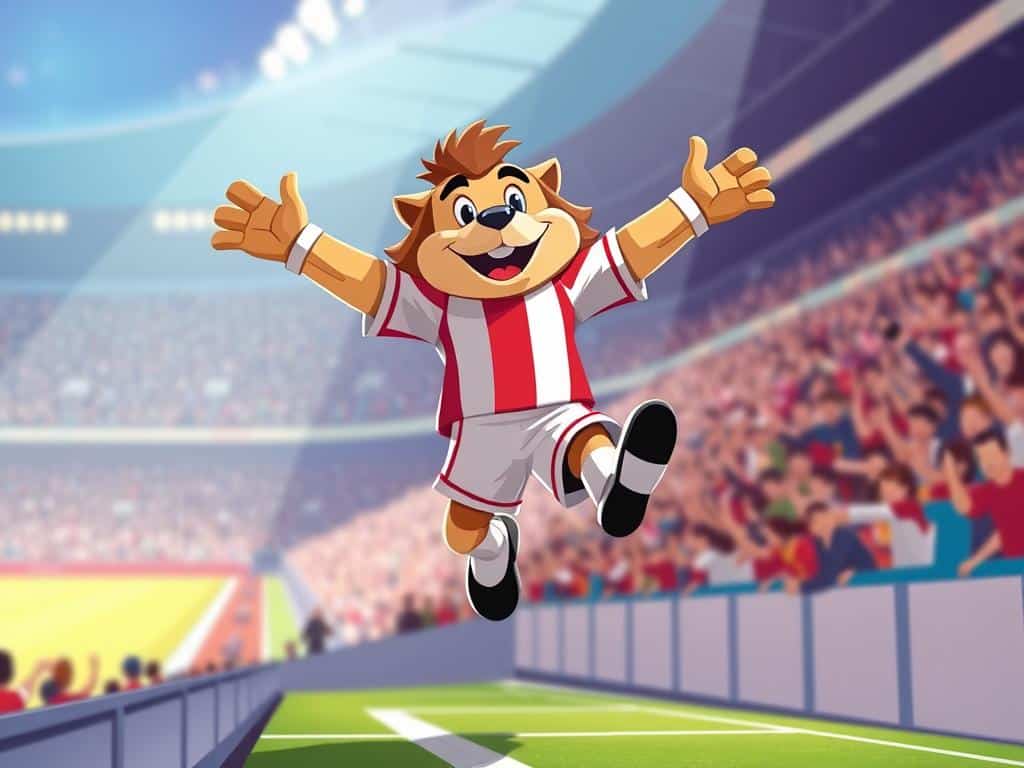
Real deals drive visibility. Filbert Fox’s 2016 Puma shoe deal proved a mascot can hold commercial value. That single deal turned a sideline character into branded revenue and wider media attention.
Sponsor-led creations can work. West Brom’s Boiler Man began as a 2018 promotion and stuck because fans enjoyed the joke. The result: higher merch interest and more social shares during the season.
Straightforward benefits clubs can track
- Increased merchandise sales after a mascot-led campaign.
- Higher social engagement from short clips—dances, pranks, and hugs.
- Community reach via hospital visits and youth clinics, measured by event counts.
- Player crossovers—tunnel selfies and birthday skits—boost family-friendly content.
| Metric | Example | Measurable outcome |
|---|---|---|
| Commercial deal | Filbert Fox + Puma (2016) | Sponsorship revenue; wider brand exposure |
| Sponsor activation | Boiler Man (West Brom, 2018) | Fan engagement spike; merch interest |
| Social content | Grayou-style clips and pranks | Higher post reach and repeat views |
Quick checklist for clubs: pick a clear name, a strong silhouette, and consistent colors. That combo helps the official mascot work on merch, social, and community programs all season long.
Controversies, pranks, and unforgettable stunts
Sometimes a single prank on the pitch outlives a whole season of results. I’ve seen quick bits become the clips friends share for years.
Harry the Hornet mocked Wilfried Zaha with a theatrical dive in a 2016 Premier League clash, and Crystal Palace people—players and staff—spoke up. The gag hit headlines and split opinion about where playful banter ends and disrespect begins.
Schalke’s Erwin once flashed a red card at a referee after a derby draw. That comic moment replayed on social feeds for weeks and gave fans a harmless shock of delight.
West Brom’s Boiler Man turned a simple tunnel walk into meme territory the first game he appeared. The stunt proved short, visual bits travel fast online.
Why these things work
- They’re quick and TV-friendly—easy to clip and share.
- They stay family-safe while adding bite to matchday theater.
- Clubs brief performers so the gag doesn’t overshadow the game or cross lines.
| Incident | Club | Impact |
|---|---|---|
| Mock dive gag | Watford vs Crystal Palace | Media debate; split fan reaction |
| Red-card stunt | Schalke | Viral replay; derby lore |
| Sponsor debut bit | West Brom | Meme spread; merch interest |
Tradition, longevity, and evolving characters
When a character survives decades, it becomes woven into local calendars and family stories. That slow build is what turns a mascot into something fans treat like family.
From Hennes’ lineage to Timber Jim’s handoff to Joey
Hennes is a living example: a billy goat lineage representing FC Köln since 1950. That kind of tradition compounds across years and makes the animal itself part of the club’s ritual.
Portland shows how rituals evolve. Timber Jim began the chainsaw slab routine in the 1970s and later passed it to Timber Joey. The core stunt stayed, while the performer and costume changed with time.
Community origins and name ownership
Wigan’s Crusty the Pie began in a school contest. Because locals helped pick the name, the character felt owned from day one. Community-sourced ideas speed trust and long-term support.
- Why it lasts: repetition — entrances, songs, and photo routines — make a character feel familiar over time.
- Keep it fresh: measured tweaks and documented milestones teach new fans why the figure is part of club life.
- Scale: community roots turn single events into seasonal highlights that repeat for years.
| Example | Origin | Key effect |
|---|---|---|
| Hennes | Living goat lineage | Deep club identity |
| Timber ritual | Handed down (Jim → Joey) | Ritual continuity |
| Crusty the Pie | School contest | Local ownership |
famous soccer mascots: a curated list across leagues and eras
From grassroots winners to World Cup icons, these characters each delivered a memorable bit that stuck.
Gunnersaurus (Arsenal) brings family-friendly dinosaur energy and timeless photo ops.
Fred the Red (Manchester United) uses tiny shin guards and a grin that kids remember fast.
Hammerhead (West Ham) reads like a transformer — bold lines and superhero swagger from any seat.
Captain Blade (Sheffield United) adds pirate drama: one eye, oversized swords, and playful mimicry in the stands.
Crusty the Pie (Wigan Athletic) began in a school contest, a grassroots origin fans still cherish.
- Boiler Man (West Brom) started as a 2018 sponsor gag and became a terrace-approved bit.
- Filbert Fox (Leicester City) proved a mascot can carry a commercial deal — Puma, 2016.
- Kingsley (Partick Thistle) was so odd it became a cult favorite across world football.
| Character | Why it matters | Type |
|---|---|---|
| Hennes | Goat lineage anchors tradition since 1950 | Living animal |
| Groguet | Submarine motif that nails club story | Club symbol |
| Fuleco | World Cup icon whose look outlived the tournament | World Cup mascot |
Takeaway: a clear name, strong silhouette, and a single great bit can turn a club character into a lasting part of fan culture.
How clubs use mascots to welcome families and new fans
A mascot often becomes the first handshake between a club and a curious family arriving for their first home game.
I watch clubs use the character to turn a stadium visit into an easy, joyful day. The official mascot greets fans at gates, poses for early-bird photos, and adds calm, inclusive energy that suits kids and adults alike.
Manchester City’s Moonchester and Moonbeam are a clear example. Their Blue Moon theme makes arrival feel friendly and personal. Wolves’ pair works the crowd too, driving plush sales and quick smiles.
- Wayfinding: meet-and-greet zones, halftime selfie spots, and post-game lap routes make it easy to find the character.
- Timing: pre-match schedules tease appearances so lines move and families arrive earlier.
- Inclusion: trained performers use quiet waves and slower moves for sensory-sensitive children.
| Tactic | Example club | Benefit |
|---|---|---|
| Meet-and-greet zones | Manchester City | Clear spots for photos; smoother crowds |
| Pre-match teases | Wolves | Earlier arrivals; improved merch sales |
| Accessible interactions | Multiple teams | Welcomes more families to every home game |
Bottom line: a friendly character is a big part of how a team builds habits. From birthday shoutouts to junior packs, the mascot becomes a lasting part of the fan experience.
Conclusion
A club character can become the small ritual fans pass down between generations. I point to the Gunnersaurus moment—brief removal, Mesut Özil offering to pay wages, and Jerry Quy returning—to show how deep that bond runs. That episode proved a mascot can matter as much as a player on sentimental days.
From a North London dinosaur to West Ham’s transformer energy, Boiler Man’s sponsor-born rise, and Wigan’s Crusty the Pie, authenticity wins over time. Fred the Red and similar figures keep stadiums welcoming for kids while veterans savor the nostalgia.
World Cup characters like Fuleco show how design can define a tournament and live long after the final whistle. If you love talking football, watch how a simple mascot cue turns a visit into a memory — and makes fans say, “see you next time.”

